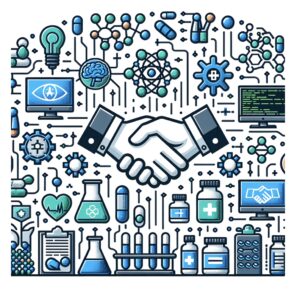Case Study:
Identifying Optimal KOLs in a CNS Therapy Area with AI
Identifying Optimal KOLs in a CNS Therapy Area with AI
Everyone in the pharma industry is familiar with KOL (Key Opinion Leader) programs. The first step of these programs is identifying the right KOLs. But are they the right KOLs or are they ‘Has-Beens’ or worse LOLs (Loud Opinion Leaders)? ‘Has-Beens’ are high level physicians who were influential in their day, but that day has passed. They are almost at retirement and winding down their career. LOLs are doctors who look like opinion leaders as they speak at a load of conferences and tell everyone how influential they are, but their research is poor and in reality, apart from conference organizers, no one is influenced by them. These 2 categories are not the KOLs you want. You want the up-and-coming influencers who will be around for some time once you have established the relationship. But how do you find them? Big data and AI of course.
The Client Problem
The client came to us wanting to utilize big data (including their social media data) and AI to identify the up and coming KOLs who would be a good investment of time and resources to establish strong relationships with within various areas of the business – including clinical, medical affairs, commercial, sales and marketing. They had a few key objectives which included creating comprehensive and thorough influencer mapping and interconnectivity, detecting any blindspots of missing important influencers, identifying opportunities for focused action for early drug development, clinical development, MSLs (medical science liaison), sales and marketing and opportunities for in-licensing.
The Solution
The client came to us wanting to utilize big data (including their social media data) and AI to identify the up and coming KOLs who would be a good investment of time and resources to establish strong relationships with within various areas of the business – including clinical, medical affairs, commercial, sales and marketing. They had a few key objectives which included creating comprehensive and thorough influencer mapping and interconnectivity, detecting any blindspots of missing important influencers, identifying opportunities for focused action for early drug development, clinical development, MSLs (medical science liaison), sales and marketing and opportunities for in-licensing.
The Outcome
There were around 50% of the top guys that the company had never heard of, and around 50% that they were very familiar with. They were surprised how many had not been on their radar with their non-big data approaches. Then the company began focusing their efforts on the top influencers that would be valuable to the company and were able to reduce spend on some of the LOLs that were not having the impact anticipated.
To achieve these kinds of results, contact Eularis today.

Latest News
Read our latest blogs here.

How Pharma Companies Can Build Trustworthy AI Agents
In an industry where a single miscalculation can impact millions of lives, pharmaceutical companies are witnessing an unprecedented transformation through AI agents – autonomous systems

The Regulatory Paradox: Vibe Coding Medical Tools in a Compliance-Heavy Industry
Healthcare innovation is now at a crossroads, where the pursuit to make revolutionary strides forward is matched only by the challenge of making tools that

Why Embedding Artificial Intelligence is Critical for Successful Digital Marketing
Everyone does digital marketing, and everybody is doing more of it these days. Consider these statistics: According to Cropink reports that over 376 billion emails
